
The Untold ICC Story: How the Global South Helped Palestine Challenge Western Institutions
Even the most optimistic of political analysts did not expect that the International Criminal Court’s Chief Prosecutor would be uttering these words:
“I have reasonable grounds to believe that Benjamin Netanyahu (...) and Yoav Gallant (...) bear criminal responsibility for (...) war crimes and crimes against humanity ...”
Aside from the two Israelis, Karim Khan has included three Palestinians on his application requesting arrest warrants from the ICC's Pre-Trial Chamber. That is important, but we must remember that, per western thinking, Palestinians have always been the guilty party.
Evidence of the above claim is that the west has long portrayed Israel as a country at war in self-defense. Consequently, Palestinians - though occupied, dispossessed and disinherited - are the aggressors.
This bizarre logic is not strange if seen within the larger power paradigm which has defined the west’s relationship with Palestine and, by extension, the Global South.
For example, out of 54 individuals indicted by the ICC since its inception in 2002, 47 are Africans, a fact that has rightly agitated governments, civil societies and intellectuals throughout the Global South for many years.

“Wanna Be a Member?”
The idea of an ambulance charging up inside a downspout just blows my mind. It’s from one of the Fleischer brothers’ cartoons, though I couldn’t tell you which because I haven’t tracked it down lately. I should.
The Fleischers, Max and Dave, took animation in a different direction from Disney in ‘30s. What they did will never be duplicated today, because hand-drawn gels are just different from CGI and its relatives. Not saying one or the other is better, but the hand-drawn springs directly from the mind. No machine could think that way.
My daughter, Caitlin, got her degree in filmmaking from Temple U. by drawing 3,000 stills that flowed together to form an animation of less than two minutes. No one else in her class attempted anything like it. In the days of Toy Story Infinity, it’s unlikely anyone will again.

“Something Between a Witch and an Empress”
I was living on the beach in a little shack in Malibu in the early seventies with my young son. Storms would arrive with wild power on the Pacific — nothing pacific about this ocean. The whales would migrate north ten feet from my house, like wonderful hulls covered in barnacles, “a whale swam by my house today, nine hours pregnant…” (Pablo Neruda)
The Santa Ana winds blew at over 100 miles per hour, with the ferocity of hell. We always waited for the Fires, the endless fires, Los Angeles weather is the weather of catastrophe, of apocalypse, the intensity off the Santa Ana winds affects the entire quality of life in LA, it shows us how close to the edge we are... The fires arrive like Dante's Inferno…
All the animals started to come down from the mountains and cross the pacific coast highway to get to the beach. Wolves, hedge-hogs, coyotes, deer, rabbits horses, donkeys, foxes, wild dogs, pigs, a sky-full of parrots.
… Three years later, one beautiful Spring morning, I decided to take a walk in the Serra retreat, with Jonathan. All of the buildings were burnt rubble, except for the occasional fireplace. Everything was covered in blazing bougainvillea. This was a Carlos Castaneda landscape. I sat on a rock while Jonathan explored the rubble of a burnt-out house. Suddenly, he comes running towards me with a book in his open hands. “Mommy, mommy, look at this,” he says. The book is as frail as moth-wings, having been out in the elements for several years. I opened the book –— it is in Italian. I start to read the book and I see it is a transcribed conversation between Fellini and me.
This book is about 8 ½. I take it home. And the next morning, my old friend Gore Vidal calls me from Rome. “Hello, Barbara”, I have a surprise for you”… Here is Federico," and he passes him the phone.

Knight Without Armour: Robert Donat
Like all the best movie stars, Robert Donat always seemed like he had a secret of some kind, yet he often underplayed and also gave the impression that he wasn’t really trying to hide anything from us. His sensitive face could look amused or disgusted very easily, and he had a rare kind of gentleness on screen mixed with a kind of gruff authority that made him swoon-worthy for many 1930s audiences. Donat had an unusually expressive voice that could shoot up as high as possible (listen to how high his voice is when he sweetly says the word, “Spit!” in The Citadel {1938}) or get insinuatingly low, as when he says, “I’m going to kiss you again,” to Elissa Landi in The Count of Monte Cristo (1934).
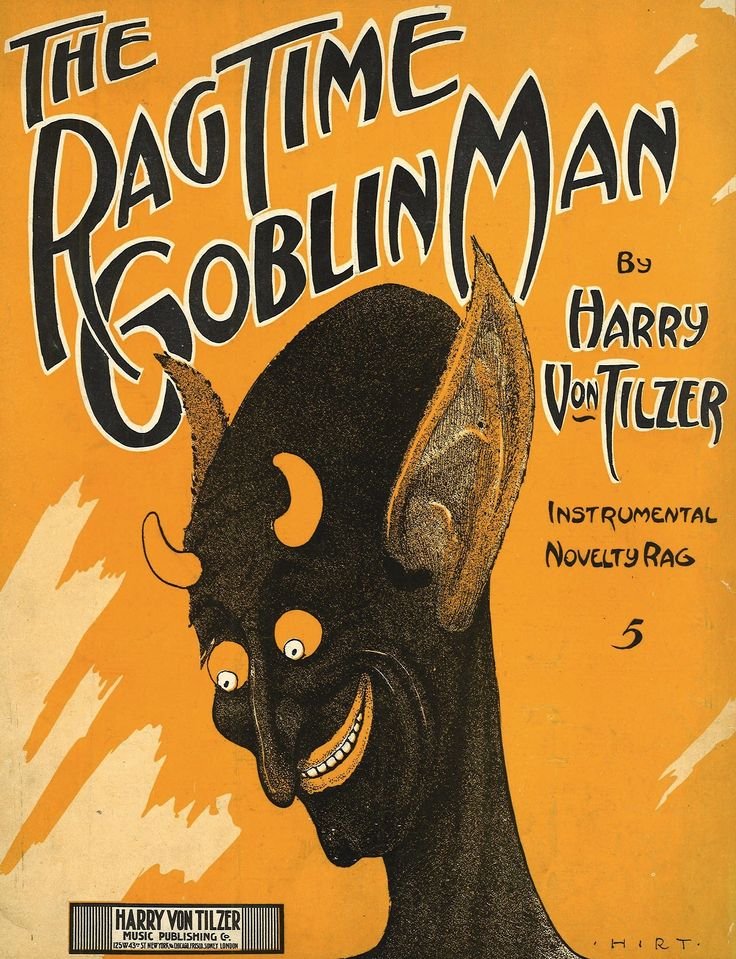
Tin Pan Alias
They’re no longer the household names they once were. In fact their names were not really their names. But between them Harry and Albert Von Tilzer were two of the more successful and prolific songwriters and publishers on Tin Pan Alley, and many of their songs are familiar today as icons of the so-called Gay Nineties and early 1900s. One of them still gets played every day there’s a baseball game.
Harry and his brothers were not born Von Tilzers. Harry was born Aaron Gumbinsky or Gummblinsky to Polish Jewish immigrants in Detroit in 1872. He grew up in Indianapolis, where the brothers were all born. The family shortened the name to Gumm, leading to the often-repeated misinformation that Frances Gumm, better known as Judy Garland, was Harry’s niece. In fact, her father Frank Gumm was not one of the Gumbinsky/Gumm/Von Tilzer brothers, but a cracker from Tennessee (and predominantly homosexual, interesting when you consider Garland’s complex personal and professional relationships with gay men later, not to mention Liza’s).
At fourteen Harry Gumm ran away to join the Cole Brothers Circus. He played piano and wrote songs for a traveling theater troupe and changed his name on the road, taking his mother’s maiden name and adding the Von for a touch of class. His brothers, all of whom went into the music business after him, followed suit. Making for more confusion, in 1929 a Helen Von Tilzer would marry one of the Marx Brothers – Gummo, of course. Because of that preposterous-seeming coincidence she’s often written up as Harry’s sister, but in fact she was born Helen Theaman in New York. Von Tilzer was her first husband’s name, and he seems to have been a real Von Tilzer, also not related to Harry and the fake Von Tilzer clan.

A Lady’s a Lady: The Versatile Elegance of Mary Astor
“What is it, love trouble or money trouble? I’ve seen them all, I’ve seen all the troubles in the world, and they boil down to just those two. You’re broke, or you’re lonely. Or both.”
The bar is almost empty at closing time, no one left but a gruff bartender and a drab barfly sitting forlornly, not wanting to go home alone. When a man comes in she gives him a tired, automatic line: “What are you doin’ down here, handsome—looking for some kicks?” Her voice is flat and sour, her face a weathered memory of prettiness, like a picture in a newspaper left lying in a puddle. She keeps chewing and picking at her fingernails. She cozies up to the newcomer, practiced, pathetic and obvious. She’s been around the block too many times to count; she’s a two-bit tart; she’s—
Wait a minute, is that Mary Astor? The “Cameo Girl” who matched profiles with John Barrymore? The femme fatale who seduced Sam Spade? The elegant, warm-voiced beauty from Dodsworth? The gracious mother of Judy Garland in Meet Me in St. Louis? Mary Astor—who was always a lady, even when she was a bitch?
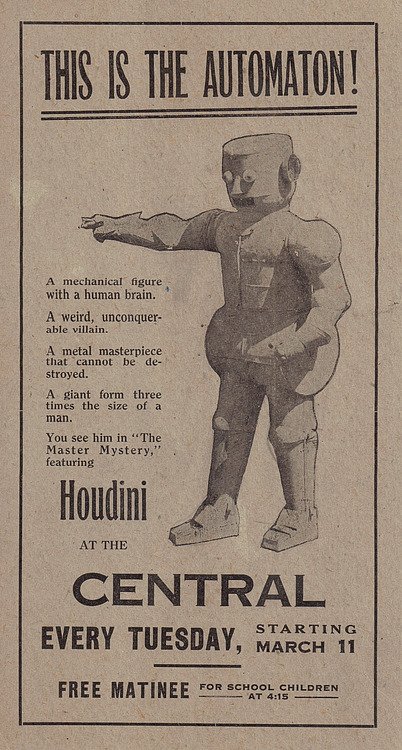
The Escapologist and the Automaton
There’s a lot of loose talk about how the long-running TV drama is the modern equivalent of the 19th century novel, with all the scope and sprawl, the ability to develop characters over time, to interweave complex plotlines and deliver startling pay-offs emotionally augmented by the sheer time spent with the dramatis personae.
This is a Golden Age for American TV. But I’d argue that a truer heir to the crown of Dickens, Eliot etc, is the movie serial, especially of the silent age. Unlike most long-form TV shows, these were written with finite story arcs, even if sometimes it seems like the authors were making the action up as they went along, which I’m sure to some extent they were. But the fact that everything is heading towards some at least partially predetermined conclusion, with at least some kind of rough road map to get there, makes them closer to Great Expectations than the extemporaneous space opera of Battlestar Galactica.
The big difference between The Master Mystery (1920), a fifteen-part (twelve hour) melodrama starring Harry Houdini, and the classics of Victorian literature, is one of quality. Serials are usually bad in just about every way imaginable, you see. Hoaky situations, flat characters, implausible character arcs, too much running around from one situation to the next without actually progressing anything, duff acting, prosaic filming. But not consistently or totally. By stringing together outrageous cliffhangers and convoluted mysteries, and setting up staunch heroes and dastardly villains (who keep winning until the final reel, however bravely the good guys struggle), the serials have a cunning way of keeping you hooked. But beyond that, they throw in regular moments of naïve genius.

Dr. Uranian
In 1959, in the basement of a tenement on the Lower East Side of Manhattan, Richard and Dorothea Tyler founded an avant-garde artists’ collective and funeral society called the Uranian Phalanstery and First New York Gnostic Lyceum Temple. The Tylers were influential underground figures in postwar New York City culture. They connected people and created webs of creativity and spirituality that blended music, visual arts, publishing, tattooing, Eastern religion, Gnosticism, Judaism, and communalism. And more. And all at once.
R. O. Tyler, as he was known, was big, bearded, heavily tattooed decades before it was hip, a jolly drinker and pot smoker who could talk your ears off. He was widely read and erudite, conversant in unusual and esoteric paths of human endeavor. For example, “phalanstery.” A very obscure word that goes back to the communes of the early 1800s and combines “phalanx” and “monastery." That Tyler knew and revived the term in the twentieth century says something about his knowledge of arcane history. That he wedded it to “Uranian,” an astrological reference to Uranus’s powerful influence on creativity and innovation, and to Gnosticism, and the Greek Lyceum, in a Jewish temple, suggests a wildly eclectic and synthesizing imagination.
He was born Richard Oviet Tyler in Lansing, Michigan, in 1924. His mother was a member of the I AM movement, a successor to Theosophy and precursor of the New Age era, founded in Chicago in the 1930s. His father was a working-class Great War veteran. Tyler fought in the Pacific in World War II, and was among the American troops occupying Japan afterward. He developed a deep interest in Japanese tattoo traditions and Asian mysticism. Returning to the US, he used the GI Bill to study at the Chicago Institute of Art, where he met not only Dorothea but also Claes Oldenburg.

Al Smith’s Log Cabin
The lowest East Side, between the Brooklyn Bridge (completed in 1883) and the Manhattan Bridge (1909), was once a maze of narrow streets lined with row houses, corner saloons and groceries, warehouses, pickle factories, stables. The heart of it was an Irish and Italian working class neighborhood of large families who attended the venerable St. James church and school. It was not a slum or a ghetto, and the residents would have been highly insulted to hear it called that. With the construction of the bridges, followed by high-rises and the FDR Drive in the twentieth century, many of the old streets, and the buildings on them, disappeared.
There’s not much of Oliver Street left, just a couple of run-down blocks in Chinatown between Chatham Square and Madison Street, where it dead-ends. It preserves a row of humble, three-story brick houses, currently looking rather forlorn and exhausted, showing every day of their more than a century’s existence. A brass plaque on the wall of 25 Oliver identifies it as the Alfred E. Smith House, listed on the National Historic Register. Al didn’t grown up there, as is sometimes averred. But he lived there a long time and raised his own kids there as a young politician. Had he succeeded in his bid to become the first Irish Catholic President of the United States, 25 Oliver Street could have become a site of American mythology to rival Abe Lincoln’s log cabin. But Al didn’t make it, 25 Oliver is in bad need of a paint job, and today’s mostly Chinese neighbors pass it without a glance.
His father, also named Al Smith, grew up on a block of Oliver Street closer to the river that no longer exists. Al Sr. was a brawny, handsome, wide-mustached working man, a cartman, or hauler of goods, with a horse-drawn truck. After his first wife died he married a girl who’d grown up near the stables at Dover and Water Streets where he kept his horses. (Her parents had come from Ireland on a clipper ship of the famous Black Ball Line that pioneered the Liverpool to New York run. They found rooms to let three blocks from where they stepped ashore and never ventured farther into America.) Al Jr. was born at 174 South Street on December 30 1873, above a little grocery store. He grew up as the Brooklyn Bridge was built. In old photographs it vaults right over the rooftop of the small, narrow house. That whole block has long since disappeared.
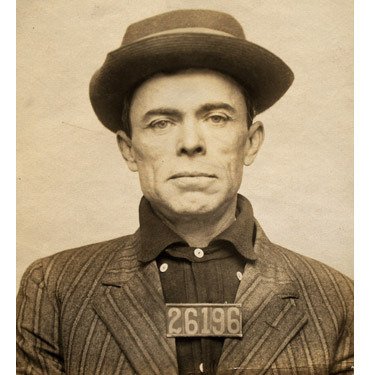
Jack Black Gets One Year
After near eleven months on the lam, late in the year 1912, Jack Black was on his way back inside. Despite his official protest at the Alberta, Canada, province jail, another protest at the Canadian border, and yet another in the States, he was remanded into custody by Canadian and American officials who had colluded extralegally to bring him back to justice in California. Jack called it “as raw a job of kidnapping as ever was done.” He knew the law; they knew the law. Yet here he was, cuffed again.
By way of train across the border and through Montana and Washington state, then finally into California, Jack prayed for either a snatched gun with which to kill himself or a fatal derailment into a ditch and get it over for he knew as well as he ever knew anything in his life that if he was taken back to Folsom prison to serve his twenty-five-year sentence he’d be dead within a year or two. He’d do anything not to see the inside again. He saw himself a loser all the way around.
Against some odds, not only did the escorting officers treat him civilly over the entire trip back to the States, giving him no chance to do away with himself, but instead of to the dreaded Folsom they brought him right back to the San Francisco city jail from where he’d escaped and begun this latest adventure underground.
There was a sort of bright side, as Jack saw it. Though he was back where he started he was a bit healthier (he had gained weight on the run) and most important he had kicked his opium habit. Legally too he found himself in shallower water than he thought he’d had below him. Although following his escape the district attorney had requested the court dismiss everything concerning his case, the special considerations and whatnot, which was done, what counsel did not know is that Black’s initial appeal on his case, the one he had applied for before the great 1906 fire that wiped out his records, was still pending, after all these years. (An intermediate court of appeals was set up for just this purpose in the post-fire years, so when the DA went to the state supreme court to make requests on Jack Black’s case, the denials for appeals reflected the prisoner’s stature at Ingleside jail, not the twenty-five-year sentence handed down in 1904 being appealed; Jack and his lawyer knew this, of course, but kept mum about it for the time being. Such were the idiosyncratic legal shenanigans at court that was part and parcel of the citywide chaos following for many years in the wake of the disastrous earthquake and fire.)
The big wheel newspaperman Fremont Older, tireless champ of the city’s underdogs, came almost immediately to see Blacky in jail when he heard the news he was back in. Jack was afraid Older would hold it against him that he’d escaped when he, Older, was trying all he could to help him. But the fighting editor understood that it was going against Black and said he thought Jack had a right to do what he did. “It was the only way out for you,” Older told Black then. “I would probably have done the same thing myself.” These two very different men were trying hard to understand each other and were succeeding.
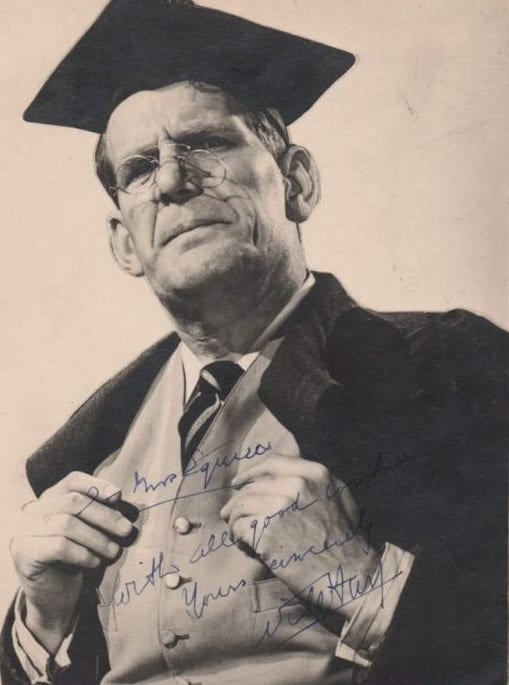
Slap and Tickle
Val Guest was a rare sort of British auteur, both for his beret-wearing artiste pose and for the way his eyes strayed to the south and the west, across channel and ocean, rather than settling for insular influences. European sexual license clearly appealed to him, and his mature face is dotted with surprise nipples which come out of left field and belong to lovely actresses you don't expect to denude: Janet Munro, Claire Bloom, Diane Cilento. But then he took the plunge into full softcore and the result could easily induce rigidity in both sexes. Though Guest petulantly argued that, had it been a French film, Confessions of a Window Cleaner (1974 ) would have been acclaimed as a spicy masterpiece of eroticism, exposure to it and The Au Pair Girls (1972) might easily cause ova to implode, spermatozoa to swim upstream, back into the balls, bent on selfspermicide. Perhaps comparison could be made to Paul Verhoeven's Turkish Delight (1973), whose hero's sexual adventurism seems as joyless, though less anxious, than Robin Askwith's licentious activities up a ladder. When Dinosaurs Ruled the Earth (1970), a nudist film in caveman drag, does not succeed in effectively combining titillation with tyrannosaurs.
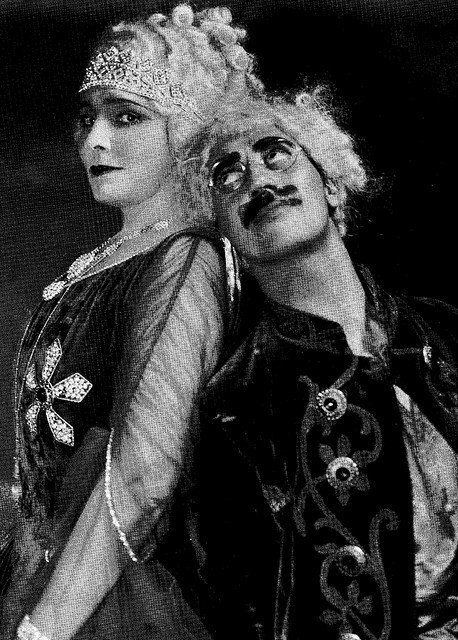
It Simply Isn’t Done: Margaret Dumont
How much did Margaret Dumont understand the jokes leveled at her by Groucho Marx? In seven movies as Groucho’s straight woman, the well-upholstered Dumont would stand at attention and have various reactions to Groucho’s fusillade of insults. She often rolled her eyes indulgently but sometimes looked perplexed and agitated. Usually, though, the insults would seem to roll right off of her, as if nothing could pierce her sweet imperturbability, her thick front of graciousness, her social poise. The characters she played with Groucho were invariably wealthy widows possessed of millions of dollars, social snobs with ropes of pearls and necklaces and lorgnettes dripping down their 1890s figures. They were stuffy and pompous women, but Dumont also gave them suggestions of shyness and vulnerability.

